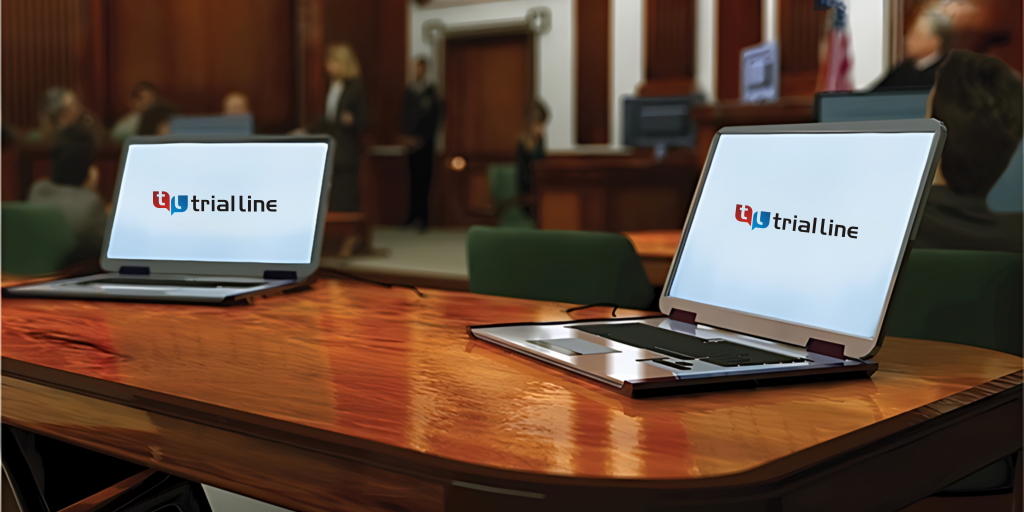Next-generation trial presentations help legal teams succeed in high-stakes cases.
Just How Test Presentations Enhance Your Debate and Encourage Jurors
Test presentations act as an essential system for improving legal disagreements and convincing jurors. By integrating visual aids, narrative frameworks, and psychological interaction, attorneys can produce a compelling case that resonates on numerous degrees. The calculated use of visuals not only clarifies complex details yet additionally records jurors' focus better than words alone. The art of storytelling plays a just as essential duty in transforming factual proof into a compelling story, shaping jurors' understandings. Recognizing these components can dramatically affect trial end results, increasing the inquiry of exactly how each part adds to this intricate dynamic.

Relevance of Visual Aids
Aesthetic help play an essential role in boosting the efficiency of trial discussions, as they can considerably increase target market engagement and retention of details. In the context of a trial, where jurors are entrusted with processing complex info, aesthetic aids offer to simplify and clear up essential factors. Charts, charts, and pictures can share data and principles that may or else bewilder or puzzle jurors, permitting a much more straightforward understanding of the proof presented.
In addition, visual aids aid in preserving juror attention throughout the process. By breaking the dullness of verbal testimony, these tools can stress vital debates, making them much more unforgettable. Reliable visual help can additionally evoke emotional feedbacks, which can be pivotal in encouraging jurors to align with the presenter's story.

Crafting Compelling Narratives
An engaging narrative is essential in trial discussions, as it acts as the backbone of efficient persuasion. It permits attorneys to weave together truths, proof, and psychological aspects right into a meaningful tale that resonates with jurors. This narrative structure allows jurors to recognize the intricacies of the case while directing them with the lawyer's debate.
To craft an engaging narrative, lawyers must concentrate on clearness and comprehensibility. This entails establishing a clear protagonist-- commonly the customer-- and detailing their journey through the occasions in question. Presenting the truths in a rational sequence improves understanding and preserves involvement. In addition, making use of dazzling summaries can develop psychological pictures that assist jurors picture the occasions, making the story a lot more unforgettable.
Furthermore, integrating key themes throughout the presentation strengthens the core message and aids in retention - trial presentations. The story needs to not just communicate information yet additionally stimulate a sense of justice, highlighting the stakes entailed. Eventually, a well-constructed narrative fosters a link in between the jurors and the situation, positioning the lawyer's disagreement as both reputable and engaging, consequently boosting the possibility of a favorable judgment

Involving the Jury Psychologically
Efficient court interaction pivots on the attorney's capacity to link with jurors on an emotional degree. This link can substantially impact jurors' assumptions and their supreme decision-making. Using emotional charms permits attorneys to humanize the instance, transforming abstract lawful ideas right into relatable experiences. By presenting real-life tales or testimonies, attorneys can evoke empathy and compassion, cultivating a deeper understanding of the concerns at stake.
Visual help, such as pictures or videos, can additionally enhance psychological involvement, providing jurors with brilliant depictions blog of the situation's human elements. Crafting a narrative that highlights the battles and accomplishments of the individuals included makes certain that jurors see beyond the legal disagreements and identify the human effects of their choices.
A lawyer's passionate delivery can resonate with jurors, reinforcing their psychological financial investment in the situation. It's vital to balance emotional allures with valid evidence, guaranteeing that jurors feel compelled to act while continuing to be based in the reality.
Structuring Your Presentation

The body of the presentation should be practically segmented into bottom lines, each sustained by compelling proof. It is helpful to use narration methods to weave truths into a story that jurors can easily adhere to. Visual help, such as charts and video clips, can enhance understanding and interaction, aiding to highlight important pieces of proof.
Real-World Case Research Studies
Analyzing real-world situation studies provides important understandings into the art of trial discussions and persuasion. The site case of "O.J. Simpson v. The People of The golden state" illustrates exactly how aesthetic aids websites and engaging stories can sway court assumptions. The defense team properly employed an approach that combined prominent expert statements with multimedia discussions, which astounded jurors and eventually influenced their decision.
One more significant instance is the "McDonald's Coffee Case," where the blog plaintiff's attorneys utilized graphic images of the injuries suffered by Stella Liebeck. trial presentations. This plain aesthetic proof played an important duty in sharing the extent of her burns, leading to a significant court award. Such instances show that impactful test discussions commonly depend upon the reliable integration of visuals and narration to stimulate psychological feedbacks from jurors
Moreover, the "Casey Anthony Trial" highlighted the relevance of narrative comprehensibility and reliability. The prosecution's failure to develop an engaging timeline reduced their convincing power, underscoring the necessity of a well-structured discussion. Assessing these situations reveals that effective test presentations call for calculated planning, emotional engagement, and the ability to resonate with jurors' worths and ideas.
Final Thought
Test presentations dramatically improve debates and convince jurors via the tactical usage of aesthetic aids, engaging stories, and emotional interaction. A well-structured presentation balances psychological appeals with accurate proof, ultimately resonating with jurors' values.